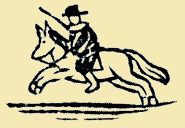- Yes!
- Group Sculptures
- Mirrors
- Sculpture Gallery
- Presents
- Have You Seen My Kitty?
- Magic Hat
- Hotseat, or, The Press Conference
- “I’ll follow you!”: A choral speech
- Three Worlds
- Two-character exchanges
- “Now I am alone”: The soliloquy
- Group voice: Sharing a character
- Showdown: Oberon vs. Titania
- Planning the Project: What do you want your students to achieve?
- Planning the Project: Making room for Shakespeare
- Planning the Project: The Final Performance
- A sample sequence
- Laying the foundation, establishing some rituals
- Preparing for the journey: A checklist
- We shall not cease from exploration

Materials needed:
Open space, room enough for students to sit in a large circle; a variety of hats, 4 to 5 if possible, of different types and shapes (you may need to borrow a few, or go to the thrift shops, to round up enough) Time needed:15-20 minutes Students participating:
everyone is in the circle teacher too, but only one person at a time does the activity; others watch This is an old classic of Winedale improvisation sessions. One note: This game involves sharing a few hats, with different students trying them on. The first time we tried this in an elementary school, concerns were raised about lice. So it’s best to think carefully about this potential snag before you do this activity. It might be best to do it after everyone has been checked for lice at some point in the year, so that no one is worried about it, or embarrassed if they do have lice and can’t participate. If you can’t use a hat, you can do something very similar with different pieces of clothing or objects: The Magic Coat. The Magic Staff. The Magic Traffic Cone. This is a role-playing game, and a wonderful chance for some students to make courageous leaps. You will have some kids resist this one, feeling terrified of being alone up in the circle, looking foolish, etc. But with patience and encouragement, eventually you can get most, if not all, of the students to give it a try.
- Have the students sit silently in a circle.
- Explain that you have a magic hat. When you put this hat on, you are transformed from “yourself” into some other person, character, or being. As long as you have the magic hat on, you are that creature. When you take it off, you return to being yourself.
- The pattern is this: The hat is put in the center of the circle. Ask the students to stare at it silently for a while. Talk in soft tones and explain that it’s important to see the hat as having this power to transform you. You may see a character in the hat; or, you may simply be drawn to put the hat on and see what character “emerges” (this is our favorite, where the most surprising moments occur). Model it first if you can; show the kids that it’s not about being funny, but about letting something happen.
- Once you are transformed, you move about the circle. You do what your creature would do. If you are a mule-driver, you grab reins and drive your team. If you are a detective you stalk a suspect. If you are a street person, you wander using the hat to panhandle. If you are a bizarre alien, you move as the alien would move.
- This is all done without talking – only noises, or silence. The students in the circle must be silent or the effect is ruined, the concentration is broken.
- When the hat has done its magic, the student takes it off, and the process is reversed – he or she returns to “normal” and places the hat back in the center and returns silently to his or her seat.
- At this point, the hat is open again. Sometimes students will stare at it for a full minute, with everyone’s eyes darting around, people wondering who will go next. Eventually someone will. Or you can go again to break the ice and do something completely different from the first time you went up.
- After 5-10 minutes, tell the group, “Last chance with this hat.” If a few more want to go, that’s good. Then put the first hat away and place a very different one out there – a beret after a battered cowboy hat, for example. (Look for hats that are expressive but flexible in the images they suggest.)
- At some point, and discuss the element of transformation. What does it feel like? See if any of the students can articulate this moment of going from “self” to “someone else.” Lead this into a discussion of what it takes to play a character in the Shakespeare play.
- Later, if you can, reincorporate some of these hats when you are working on characters from the play. Perhaps the hats can spark new physical transformations in the characters and bring new energy to a scene.
